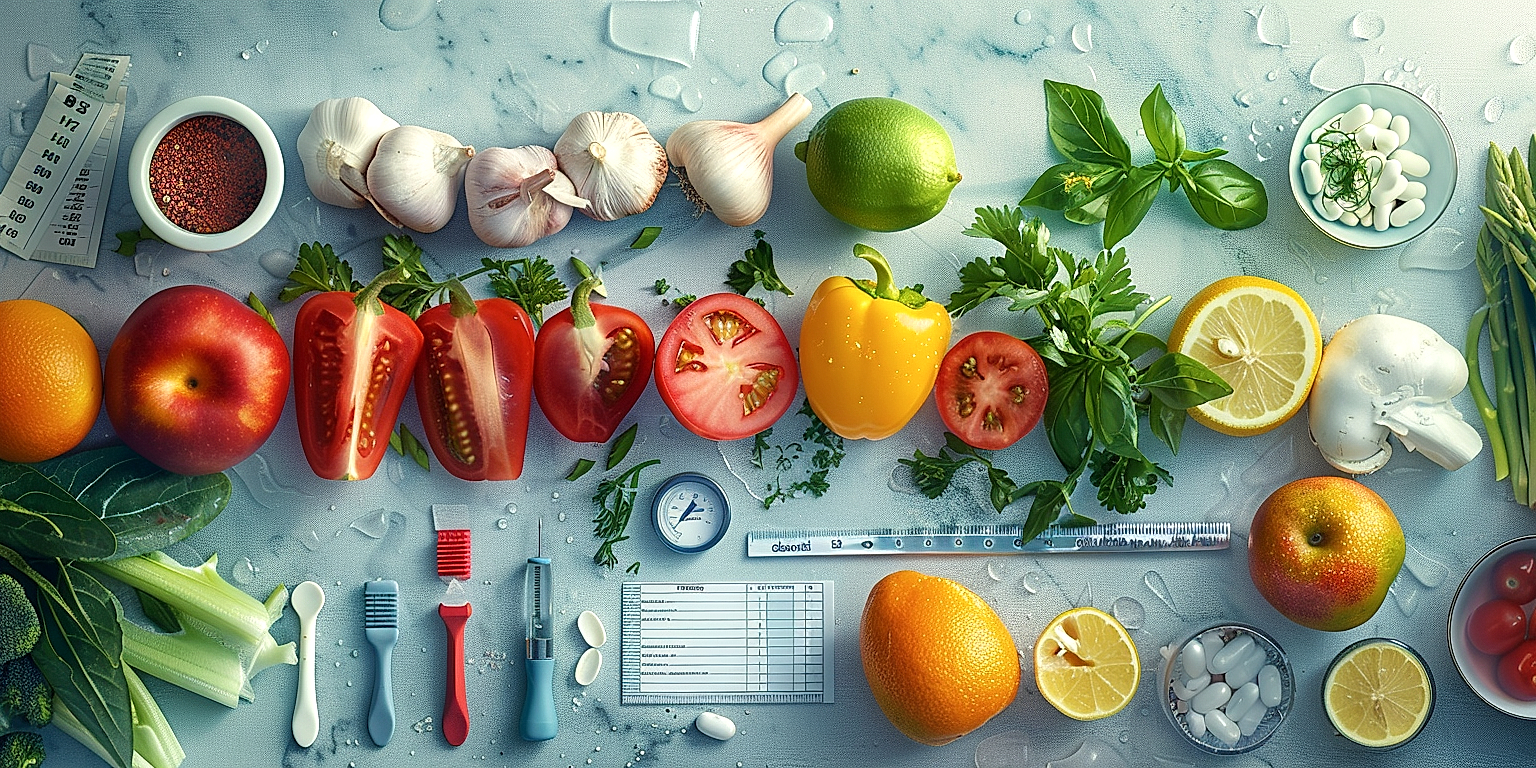Ensuring high standards of quality for fresh produce is central to the successful operation of any retail business in this sector.
Both the safety and satisfaction of consumers hang on the ability to maintain and guarantee the quality of the fruits, vegetables, and other produce items sold.
But achieving this is not simply a matter of luck or chance.
It necessitates the implementation of several meticulous and carefully planned procedures.
In the following article, we break down these crucial steps into a more digestible format.
Here, we offer a comprehensive guide to the quality control measures essential for produce retailers.
Contents
- Quality Control Steps For Produce Retailers
- 1. Train staff on produce handling and storage
- 2. Regularly conduct temperature and humidity checks.
- 3. Schedule Frequent Produce Quality Inspections
- 4. Ensure proper cleaning procedures for all produce.
- 5. Monitor Inventory for Freshness and Rotation
- 6. Promptly remove any damaged or spoiled items
- 7. Maintain strict compliance with health codes.
- The Bottom Line
Quality Control Steps For Produce Retailers
1. Train staff on produce handling and storage
The first and pivotal step towards ensuring quality control for produce retailers is to train the staff on handling and storing the produce.
When the staff has the appropriate knowledge and skills, it becomes easier for the retailers to maintain the quality of the fruits and vegetables they sell.
This training not only educates the staff on how to handle the produce but also gives them an insight into the nuances of proper storage methods.
Effective training of staff members plays a critical role in retaining the quality, freshness, and taste of the produce.
Due to different needs and specifications of different produce, it is necessary to invest time in educating the staff about characteristics and storage specifications of each type of produce.
Furthermore, keeping these factors in mind, the training provided should be comprehensive and should cover all relevant aspects to ensure safety and quality of the produce.
The staff should be trained on the strict adherence to hygiene standards while handling the produce.
This not only prevents contamination but also ensures the shelf life of the produce is extended, which ultimately benefits the retailer in the long term.
Training should also be directed at techniques for produce selection, to ensure that only the freshest and highest-quality produce makes it to the retail store’s inventory.
By maintaining rigorous standards in this area, retailers can avoid produce damage and wastage, which lead to significant losses in the industry.
Moreover, comprehensive staff training also instils a sense of accountability and responsibility among them.
This in turn, reinforces their effort to check each item of produce carefully before it is offered to the customers.
The staff should also be trained to handle customer queries regarding the storage methods of different types of produce.
This not only boosts their confidence but also enhances their ability to assist shoppers in making informed choices about their purchases.
With regular training and continuous reinforcement of quality control measures, all of the staff members will be equipped with the necessary skills to handle, store, and select quality produce.
In these ways, thorough and effective training of staff members serves as a strong foundation for maintaining the quality and safety of the produce offered to customers.
2. Regularly conduct temperature and humidity checks.
For quality control in produce retail, it is crucial to regularly conduct temperature and humidity checks.
This is because produce items are highly sensitive to temperature fluctuations and humidity levels.
If the temperature isn’t kept constant within the optimal range, produce items can spoil faster, leading to a loss in the quality and potential profits.
Similarly, improper humidity levels can cause produce to shrivel and lose its fresh appearance, which can deter customers.
Thus, conducting regular temperature and humidity checks enables retailers to ensure that their produce is stored in optimal conditions, maximizing shelf life and retaining quality for longer.
Moreover, these checks can alert retailers of any potential issues before they cause significant damage.
For instance, if a refrigerator’s compressor is not working properly, and the temperature starts to rise, regular checks can help identify the issue early, allowing for a quick fix.
It is also essential to ensure that thermometers and hygrometers used for these checks are accurate and reliable.
Temperature and humidity control is not just significant for refrigerated or cooled inventory.
Even produce stored at room temperature can be adversely affected by extreme temperatures and improper humidity levels.
Temperature and humidity checks therefore need to be performed throughout the store, not just in specific sections.
Additionally, it’s important to note that various produce items have different optimal storage conditions.
For instance, bananas require higher temperatures than berries, while root vegetables prefer lower humidity levels than leafy greens.
Consequently, retailers must be knowledgeable about the specific temperature and humidity preferences of different items and adjust storage conditions accordingly.
Lastly, performing these checks is not a one-time task.
They must be done regularly and consistently to maintain the quality of produce for a sustained period.
This routine task should ideally be performed at least twice a day — in the morning and in the late afternoon — to ensure optimal storage conditions throughout the day.
Hence, temperature and humidity checks play a vital role in the quality control process for produce retailers.
3. Schedule Frequent Produce Quality Inspections
To ensure the highest level of quality control in a retail environment, it’s vital to schedule frequent produce quality inspections. This is a proactive measure to keep the stock in optimal condition and maintain a high quality of products.
Quality inspections should be scheduled at regular intervals to ensure that the products being offered are of exceptional quality at all times.
This could be on a daily, twice a week, or even a weekly basis, depending on the volume and turnover of produce in your retail store.
In these inspections, staff should assess the freshness, color, texture, and smell of the items.
Regular quality inspections will help in identifying any potential issues early, before they impact a larger portion of the inventory.
By conducting frequent quality inspections, you are showing your customers that you care about the quality and freshness of the products you sell.
Quality inspections are not only to the benefit of the customer, but they also help stores maintain a high standard of product and can reduce waste and loss.
Retailers should also consider involving their employees in these inspections. This empowers employees to take ownership of the product quality and motivate them to maintain these standards.
Further training may be necessary to ensure that all employees are confident and competent in performing these inspections accurately. Investing in your employees in this manner can dramatically impact the overall quality of your product range.
It’s also crucial to document these inspections. By tracking results over time, patterns can emerge that could inform better storage and handling practices.
This level of consistency and routine attention to detail can ensure that the stock remains in peak condition, making your store a trusted source for fresh produce.
Regular quality inspections also allow for the opportunity to clear out any products that are nearing the end of their optimal freshness stage. These items can be moved to a clearance section, donated, or discarded to prevent them from negatively impacting the overall quality of your inventory.
A well-planned and executed produce inspection schedule can dramatically improve the perception of your store. Your customers will appreciate the dedication to quality and are likely to become recurring shoppers.
Quality is not a mere factor to be considered; it should be a central part of your retail operation. Through frequent produce quality inspections, you can consistently deliver fresh, high-quality products.
With proper monitoring and inspection, any retail store can create a favorable shopping experience that builds customer loyalty and trust. Consistency is the key to maintaining the highest standards of quality control in your retail environment.
4. Ensure proper cleaning procedures for all produce.
Ensuring the proper cleaning procedures for all produce is a crucial aspect of the quality control steps for produce retailers.
One of the first steps in this process is to make certain that all employees are thoroughly trained in these procedures.
The importance of cleanliness cannot be overstated in preventing cross-contamination and potential foodborne illnesses.
Implementing thorough and regular cleaning routines will enhance the quality of the produce while safeguarding consumer health.
These routines should include the cleaning of the produce itself, as well as the storage and display areas where the produce is held.
Another pivotal part of the cleaning procedure is ensuring that all cleaning tools and equipment are clean and properly maintained.
Using dirty or poorly maintained equipment in the cleaning process can ironically lead to the contamination of the produce.
Tailoring the cleaning procedure to the specific needs of different types of produce is also important.
For instance, leafy greens may require more gentle handling and specific washing procedures compared to hard-skinned fruits like melons or citrus fruits.
The exact methods used can differ depending on the type of produce, but they should all be designed to effectively remove dirt, bacteria, and possible pesticides from the produce.
Something to note is that the cleaning procedure does not end once the produce is on the shelf.
It is necessary to maintain a consistent cleaning schedule even while the produce is on display.
Special attention should be given to ensuring that any produce that falls on the floor is immediately removed and either thoroughly cleaned or discarded.
The last key point of the cleaning procedure is to ensure that all hands that interact with the produce, be it retailer staff or customers, are clean.
This not only prevents the spread of germs, but also maintains the overall appeal and integrity of the produce.
By meticulously observing these proper cleaning procedures, produce retailers can ensure the highest standards of quality for their offered products.
5. Monitor Inventory for Freshness and Rotation
In order to maintain the highest level of quality for their customers, produce retailers must not only monitor their inventory but also ensure their produce is fresh and adequately rotated.
Having a system in place for checking the freshness and rotation of inventory can significantly improve the overall quality and safety of the produce.
Keeping track of the freshness of the produce requires regular and diligent inspections.
It involves checking the appearance of the items, looking out for any signs of spoilage or damage, and ascertaining that the color and smell of the produce are up to par.
This routine inspection helps in eliminating any produce that is past its prime and makes room for fresher, high-quality items.
Additionally, rotation is an equally important aspect when it comes to preserving the quality of the produce.
Produce retailers should implement a ‘first-in, first-out’ (FIFO) system, which involves putting newer stocks behind the older ones so that the latter can be sold off first, thereby ensuring that none of the items overstays its shelf life.
This system plays a pivotal role in preventing unnecessary wastage of produce and maintaining optimal stock levels.
Such a system necessitates the marking of produce with their respective delivery or harvest dates so that the staff can easily distinguish between the old and new stock and manage their rotation accordingly.
The use of technology, such as inventory management software, can prove to be highly beneficial in this regard, making the task much more manageable and less prone to human errors.
Moreover, it is crucial to remember that different types of produce have different shelf lives, and thus their rotation and freshness checks must be carried out at varying frequencies.
For instance, leafy vegetables and berries spoil faster than roots and tubers; therefore, they require more frequent checks and faster rotation.
The storage conditions of the produce, such as temperature and humidity, also play a significant role in determining the need for rotation, and these must be monitored closely alongside the freshness checks.
To conclude, a well-organized inventory that is regularly monitored for freshness and properly rotated can drastically enhance the quality of the produce that a retailer offers to their customers.
It not only ensures customer satisfaction but also contributes to sustainable practices by reducing food wastage.
6. Promptly remove any damaged or spoiled items
Quality control in the produce retail industry requires consistent and diligent attention to the inventory.
In order to maintain the highest possible quality of fresh produce, it is an absolute necessity to promptly remove any damaged or spoiled items from the shelves and storage areas.
When consumers see fresh and vibrant produce, their confidence in the retailer is boosted.
However, sometimes, due to various reasons, like improper storage conditions, unethical practices during transportation, poor handling by staff or even natural rotting, some produce items may get damaged or spoiled.
It’s of utmost importance that such items are identified as early as possible and removed promptly.
By promptly removing spoiled items, retailers can limit the spread of spoilage to other produce and help maintain the overall freshness of the inventory.
This not only maintains an attractive display but also prevents the contamination of other produce.
It’s also important to remember that the timely removal of damaged goods is essential in adhering to health and safety regulations – if not meticulously adhered to, it can lead to fines and penalties, or in extreme cases, closure of the business.
The retail staff should be well trained and equipped to identify signs of damage or spoiling in fruits and vegetables.
This includes spotting obvious signs of decay, such as mold or rot, as well as less noticeable signs like loss of firmness, change in color, or an off smell.
Furthermore, the task of removing spoiled items should follow a proper process too.
The spoiled item needs to be carefully removed to avoid spreading of spoilage.
After the removal, the shelf or bin holding the item must undergo thorough cleaning and disinfections.
This ensures that any remaining spoilage spores or bacteria are eliminated, further preventing possible spread of spoilage to new items.
Lastly, it’s crucial to record and track removed items for inventory management.
Timely removal of damaged and spoiled items, not only maintains the quality and integrity of the remaining produce but also reaffirms the consumers’ trust in the retailer’s commitment to delivering fresh and safe products.
7. Maintain strict compliance with health codes.
The importance of health codes in the produce industry can’t be overstated.
Here, they don’t merely represent guiding standards but serve as the minimum requirement for ensuring the safety and quality of the products available to consumers.
Every produce retailer should familiarize themselves with the local, state, and federal health codes relevant to their operation.
This entails keeping abreast of updates, changes, and modifications to these regulations in order to stay compliant.
Ensuring strict compliance with health codes is the bedrock of maintaining produce quality in retail.
It’s crucial to note that non-compliance can lead to legal consequences and damage to a retailer’s reputability.
These outcomes can significantly affect the confidence consumers have in a retailer’s ability to provide high-quality, safe produce.
Therefore, it is the responsibility of produce retailers to imbibe a culture of strict adherence to health codes among their staff.
They should regularly educate and train their staff, reminding them of the importance of adhering to these health codes.
They should also employ systems to ensure that these codes are being followed properly.
A regular audit of operational procedures can reveal how well staff are adhering to established health codes.
These audits shouldn’t merely serve as checks for noncompliance; they should also provide insights on how to better maintain or improve adherence to health codes.
Additionally, it’s important to factor the changing conditions in the supply and retail environments.
These include but are not limited to environmental factors, seasonality, and market trends, each of which can affect produce quality and safety.
Health codes should guide every decision made in the process of handling, storing, and selling produce.
Hence, maintaining a steady commitment to following health codes ensures the highest level of produce quality and lays the groundwork for excellent retail service.
The Bottom Line
Maintaining and enhancing the quality of produce in a store is fundamentally a multifaceted task, that calls for a highly disciplined approach towards staff training, environmental monitoring, quality inspection, cleanliness, inventory management, and regulatory compliance.
Timely removal of compromised produce is crucial, as are rigorous adherence to health codes.
As such, these steps are integral for ensuring sustainable business operations, customer satisfaction, and profit margins.
These measures not only uphold the reputation and integrity of the store but also significantly contribute to public health and safety.
The success of produce management undoubtedly lies in the implementation of these crucial areas.




